► It’s the first new Toyota Land Cruiser in Europe for 15 years
► How to strengthen the indestructible
► We speak to Minoru Takayama, assistant chief engineer of the new Land Cruiser
Of all the long-running models, the Toyota Land Cruiser is perhaps the hardest to develop. Sold in more than 170 countries and the transport of choice for the UN and various aid agencies – not to mention some less savoury organisations – the Land Cruiser is a car that absolutely must be built to last.
For generations it has been renowned for its ruggedness and capability. So how do you go about making one of the world’s toughest cars even tougher? You test it until it breaks, says Minoru Takayama, assistant chief engineer of the new Land Cruiser, known as the 250.
‘We have the kowashikiri process [literally, “destroyed” in Japanese], where we test something until a part breaks, and then you improve that and test it again to find the weak points. That process is unique to the Land Cruiser.’
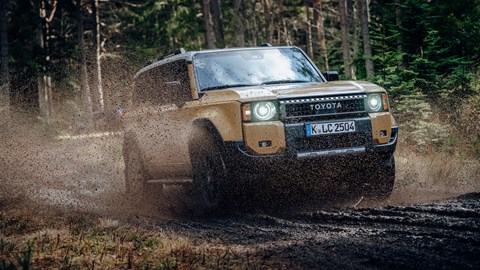
Sounds drastic, but Takayama says that aside from some hardcore off-roading it’s not very different from the way any Toyota is developed. ‘The testing formula is very similar to other passenger vehicles. However, what they don’t do is the off-roader test. The Land Cruiser has to go anywhere, everywhere and come back in one piece.’
Specifically, it now has a disconnecting front anti-roll bar that allows for more wheel articulation (like the Jeep Wrangler Rubicon) and toughened diffs that can now unlock more quickly if it gets stuck. Unlikely, though – this is a Land Cruiser.
As part of the big 4×4’s development, engineers work out which exposed parts should be designed to withstand a proper beating. ‘Designing the underfloor is very difficult, and we focused on what aspects were touching the rocks and gravel. Preferably we avoid parts touching the ground [when extreme off-roading] but through the kowashikiri process we work out which parts are allowed to touch the ground and which can’t. We confirm this carefully with our testing.’
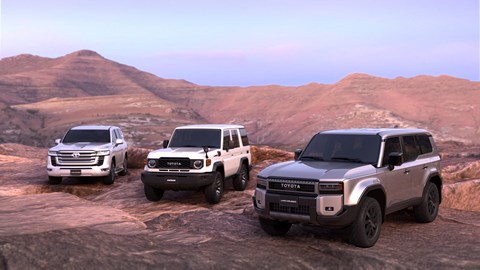
This new 250 Land Cruiser replaces the 150, and though the old car’s off-roading can’t be questioned, its on-road manners and interior left a lot to be desired. Toyota has addressed both of these and it’s a huge improvement; in many respects it seems to have been Defender-fied.
Takayama disagrees. ‘The previous model had been designed to be more like a Land Rover but, for this latest model, we tried to get back to the origins – to bring back some of the Land Cruiser-ness.’
Takayama lives and breathes Toyota. He tells us about a trip when he was in primary school to a Toyota factory to watch the manufacturing process; that inspired him to join. His first car was a Toyota Sprinter Trueno, which you might know as an AE86. He even lives in Toyota City. ‘I only wanted, and only ever want, to work for Toyota.’
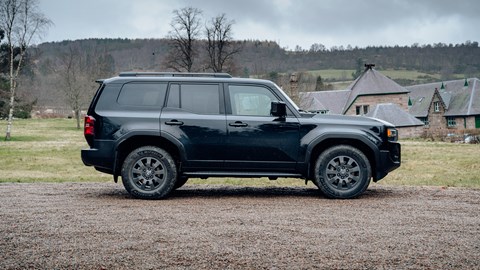
He has history with the Land Cruiser, having been in charge of the 150’s steering and brake pedal (two pretty important functions) and then led development of the air suspension of the flagship 300.
What of the future? While the new 4×4 launches purely in diesel form in the UK, a mild hybrid will follow in 2025, though Toyota says this is to make it ‘smoother and quieter’, with any potential efficiency gains carefully glossed over. Other markets, such as America and China, will get a hybrid version, sharing a powertrain with the Tacoma pick-up. And an electric Land Cruiser? Well, you’ll have to wait a few years it seems.
‘As a company, we should see a battery-electric model [in order] to be carbon neutral, but today we cannot provide a battery for the Land Cruiser. We have to consider that it’s sold in 170 countries, and the Land Cruiser DNA is that it can go anywhere and everywhere and come back safe and well. That’s a very difficult point with electric.
‘In the far future, we need to consider battery-electric, but it needs to fulfil our Land Cruiser standards.’
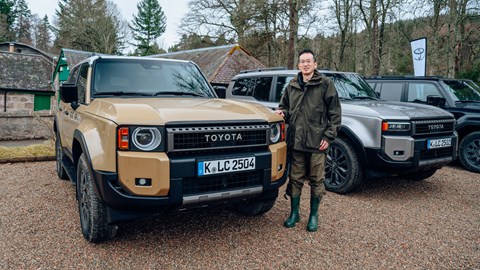
There are three things he’s most proud of about this new car: its appearance, the way it drives and its performance. But Takayama is modest about what he and his team, overseen by chief engineer Keita Moritsu, have achieved.
‘We felt the pressure and it helped to develop us as people in the process. I’m very proud of being a part of the development, but we always have to be modest and humble. It’s a skill but there are always more things to do.’
Six questions only we would ask…
What was your first car?
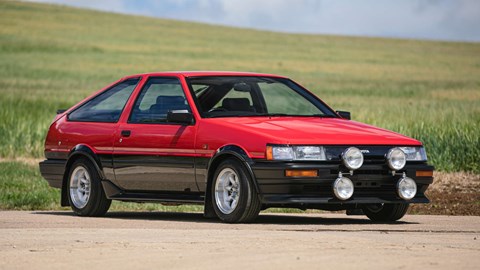
‘A Toyota Sprinter Trueno. I got it as soon as I got a licence at 20. I worked a part-time job to save money and get that car, and loved it very much and tuned it all by myself. I learned a lot from that car.’
What is your proudest achievement
‘I run a lot and often do marathons. In order to complete a marathon, you have to train hard and daily. I haven’t been able to do as many marathons recently as I’ve been busy working on the Land Cruiser. But I’ll do them again.’
Tell us about a time you’ve screwed up…
‘At an interview at a previous job I couldn’t answer any of the questions. That wasn’t good.’
What’s the best thing you’ve ever done in a car?
‘Actually, probably creating the air suspension of the Land Cruiser [the 300, not available in Europe] and improving it to be a good structure and reducing the weight.’
Supercar or classic?
‘I’d have a classic car, as they tell a lot more history.’
Company curveball: Who was the first customer for the Land Cruiser?
‘The military? [Half right, as it was technically the National Police Reserve of Japan.] I’m going to check that later!’